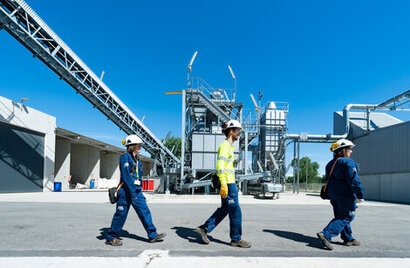
The Gaya platform produces renewable gas from Solid Recovered Fuel (SRF), mostly consisting of waste wood, paper, cardboard and plastic. The platform is supported by the French agency for ecological transition ADEME and is in line with the targets set by the French Law on Energy Transition for Green Growth, which aims for a 50 percent reduction in the quantity of waste going to landfill by 2025 compared with 2010 and a 30 percent reduction in fossil fuel consumption in 2030 compared with 2012, with a view to preserving the environment and strengthening France’s energy independence.
“With Gaya, we have made major scientific advances in the development and industrialisation of renewable gas production sectors” said Adeline Duterque, Director of Engie Lab Crigen, the Corporate Group’s Research & Development centre. “The platform model contributes to the energy transition with the production of renewable gas and to the circular economy by making use of waste that until now was destined for landfill. The tests carried out using SRF show that we now know how to produce renewable gas from this type of waste”.
Based on the work already undertaken, Engie plans to build a first industrial unit in Le Havre, France, starting in 2023, the Salamandre project. From 2026, this will allow 70,000 tonnes of non-recyclable waste per year to be used to produce up to 150 GWh of renewable gas, equivalent to the consumption of 670 urban buses. In addition, the multi-energy process will allow production of 45 GWh of renewable heat to meet urban and industrial needs. As an alternative to landfill, which is due to be phased out, the Gaya chain is positioned as the channel of reference for making use of non-recyclable waste to produce a storable renewable gas, which can substitute for natural gas and as such has multiple end uses: sustainable mobility, industry, the tertiary sector.
For additional information:

